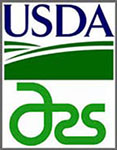PICS bag evaluation
Principal investigator

Chris Butts
USDA, ARS
National Peanut Research Lab, Dawson, GA
Co-PI

Lisa Dean, USDA, ARS
Market Quality Handling Research
Raleigh, NC
Work plan (Oct 2017 – Sep 2018)
Oct 2017 – Design the research protocol and obtain all materials (peanuts, bags). This must be done near the US harvest period for optimal shelf life evaluation. Bags will be stored at various temperatures, with various input moisture content.
Oct 2017-Sep 2018 – Bags will be sampled every 60 days for oxygen levels, peanut oil oxidation, aflatoxin and insects. Seed germination will be determined after 0,60, 120, 240, and 360 d in storage. Sensory analysis will be conducted at 0, 120, 240, and 360 d.
Dec 2018 – Draft summary findings for collaborator feedback.
Jan 2019 – Finalize report
Technical evaluation of PICS bags for use with shelled peanuts
Research/project objective(s)
Post-harvest storage has been clearly identified as a critical control point for aflatoxin, as well as a source of major loss for smallholder farmers and commercial aggregators alike due to insect damage. Hermetic storage, specifically PICS bags, has been successfully promoted to address these issues in cereals and dry legumes. Hermetic storage may also present a viable option for improving seed storage, leading to higher germination rates. However, peanuts have proven to be more complex for hermetic storage than cereals and dry legumes due to their oil content and seeming reduced respiration rate that may slow the oxygen absorption process within the bags. Trials have shown the technology has promise, but adoption will hinge on early success or failure based on clear protocols for use and the suite of benefits perceived by farmers and aggregators, including pest control, shelf life, aflatoxin mitigation and potential for increased germination. There is also a significant difference in oil content and quality of varieties that may impact the effectiveness of the product. This project will address two initial moisture levels, four PICS storage treatments, and two peanut cultivars (one high oleic, one normal oleic). High oleic varieties are gaining interest in developing countries, but are currently unavailable.
Relation to the overall mission of the Peanut Innovation Lab
PMIL invested in evaluating this technology and learned much about the potential and constraints. This study will incorporate this findings as well as practical considerations, such as input moisture content, quality variation particular to oil type and shelf life measures. While other specific technologies were used during PMIL, the widespread availability and lower price of the PICS bags, requires that we focus on that technology. These bags are available in nearly every Peanut Lab target country and could also be used for breeders for seed storage.
Rationale for including this activity as an initial activity
There is need for definitive answers on the correct use of this technology that is time sensitive. Dr. Butts’ peanut specific experience on storage issues is unique in the US and the US industry has expressed some interest in related technology. The Malawi Agricultural Diversity Activity project is also immediately seeking to scale this technology if it is determined to be useful and will require input on protocols as quickly as possible.
How research outputs will enhance the competitively awarded research activities
Several technical questions persist concerning the adoption and extension of this technology that are more relevant to competition than this straightforward evaluation.
